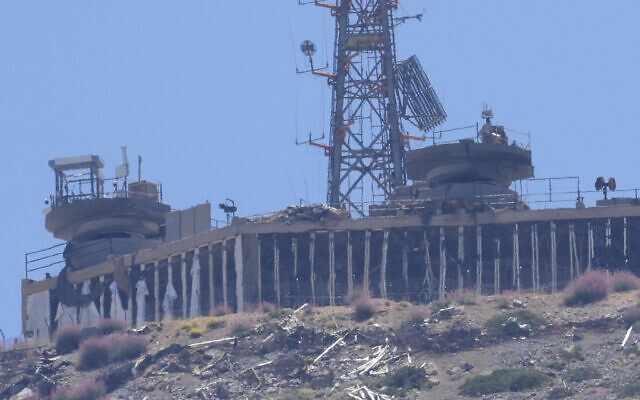China attempting to militarise space as it seeks to modernise its military power

Advertisement
With an aim to have a modernised military, China has conducted the greatest number of space launches in 2018 and 2019 and is apparently trying to dominate space.
This year alone, China has already launched 22 space vehicles out of a planned 40. What China does not admit is that its ambitious space programme is under the control of the People’s Liberation Army (PLA).
In 2019, China’s space programme had an estimated budget of USD8 billion, trailing only that of the US. This money has produced impressive achievements. In the same year, China landed its Chang’e-4 rover on the far side of the Moon, permitting the nation to be labelled a leading player in space.
More recently, on June 23 this year, China launched its final BeiDou satellite to complete global coverage of its dual-use (i.e. civilian and military) precision navigation and timing (PMT) system. There are currently 30 BeiDou satellites in orbit, enabling five main functions: real-time navigation, rapid positioning, precise timing, location reporting and short message communication. BeiDou helps the PLA immensely as it seeks to operate in far-flung regions.
In a webinar hosted by a US think-tank, The Jamestown Foundation, one presenter, Dean Cheng, Senior Research Fellow at The Heritage Foundation, noted that Beijing’s space programme is linked to China’s central concept of comprehensive national power.
“This is basically how the Chinese think about how they rack and stack, how they compare with other countries.”
China recognises that military power is important, but it is not the only factor in being a great power. Cheng drew a parallel with the former USSR, where military power alone did not ensure survival of that communist state. Other comprehensive national power factors are political unity, economic power, diplomatic strength, science and technology, and even culture.
“Space touches every one of these aspects in comprehensive national power, and that is a part of why Chinese see space as so important,” Cheng said adding that a strong space industrial complex will generate benefits that ripple through the rest of China’s economy.
Furthermore, he said space achievements “promote pride within China, especially for the Chinese Communist Party (CCP) … It’s symbolic of how far China has come,” he said.
China is pushing into space services, including satellite launches, satellite applications and Earth observation/satellite imagery for others. Satellite customers include Belarus, Laos, Pakistan and Venezuela, for example, attracting hard currency and influence.
Cheng said most underestimate the impact this has, as such countries grow almost totally dependent on Chinese equipment, assets and training over time. Incidentally, China could have manufactured back doors into these systems for foreigners to allow it access.
In the same webinar, Mark Stokes, Executive Director at the US-based Project 2049 Institute think-tank, said that PLA requirements have always been fundamental to development of Chinese space capabilities.
Potential PLA space missions in support of joint warfighting in a crisis include targeting (battlefield surveillance, electronic reconnaissance and ocean surveillance), communications, PNT services (obtaining target data, navigation information, navigation support and timing services), space jamming (encompassing space communications, radar, electro-optical and PNT) and space protection.
Stokes said the end of 2015 was “significant” for Chinese space efforts because consolidation of end-users under the PLA’s Strategic Support Force (PLASSF) occurred, specifically within the Space Systems Department. In terms of developing and meeting requirements, the PLASSF is now “much more efficient,” he said.
Indeed, China created its space force in 2015, just a few months after Russia. After formally establishing its Space Force in December 2019, the US is still getting its equivalent off the ground.
Cheng said both China and Russia have been pushing to militarise space, even though such a term is probably meaningless given that 95 per cent of space technology has dual applications for both military and civilian use.
Stokes said that “not much has changed really in terms of the space launch infrastructure and the launch, tracking and control of space … but they are now integrated with end-users, and that is going to have an effect on making the whole system more efficient.”
China has freedom of action in space, and the creation of the PLASSF and consolidation of space/counter-space research, development and acquisition, as well as training and operations, have benefitted from a single integrated command.
Cheng said, “The Chinese see future war as revolving around joint operations, which are not just land, air and sea forces. They also include the outer space and electronic warfare domains, which are necessary for information dominance.”
China, therefore, wishes to deny an adversary like the US the use of space, plus it needs to give the Chinese military every advantage.
China has therefore developed the ability to target hostile space-based assets (from the ground or space) and their all-important data-links. Indeed, jamming and electronic warfare complement anti-satellite weapons (which China has already tested), any of which can achieve effective mission kills against US and allied satellites.
A detailed report entitled China’s Space and Counter-space Capabilities and Activities, prepared for the US-China Economic and Security Review Commission, was published on March 30. Its authors, Mark Stokes, Gabriel Alvarado, Emily Weinstein and Ian Easton, summarised China’s counter-space capabilities.
“China has an operational counter-space capability that will evolve through 2020 and out to 2035. These capabilities include anti-satellite kinetic kill vehicles (KKV) and space electronic countermeasures … On the non-kinetic side, the PLA has an operational ground-based satellite electronic countermeasures capability designed to disrupt adversary use of satellite communications, navigation, search and rescue, missile early warning and other satellites through use of jamming,” it said.
China obtained its first ground-based satellite jammers from Ukraine in the late 1990s, but it has developed its own solutions since then.
“The PLA is capable of carrying out electronic countermeasures to disrupt, deny, deceive or degrade space services. Jamming prevents users from receiving intended signals and can be accomplished by attacking uplinks and downlinks. The PLA and defence industry are developing and deploying jammers capable of targeting satellite communications over a large range of frequencies, including dedicated military communication bands. The PLASSF also has advanced cyber capabilities that could be applied in parallel with counter-space operations.”
Nonetheless, the report asserted that the US still assumed a technological lead in space.
In a conflict, China could have the “option of augmenting existing space-based assets with microsatellites launched on solid-fueled launch vehicles”. Such satellites weigh between 10 kg and 100 kg.
If one of China’s satellites was attacked by the USA in a conflict, Cheng said that Beijing sees things differently from an American perspective.
Indeed, China thinks more of using space to deter military action elsewhere – for example, it would see any hostile action in space as being tied to a geostrategic Taiwan or South China Sea issue. Cheng therefore saw it as more likely China would respond by downing an American drone or jamming GPS, since it sees space more holistically than a typical American tit-for-tat response.
Stokes believes the US is ahead of China in general in terms of space technologies, but he identified two areas where China probably holds an advantage. One is in space electronic countermeasures, “with China and the PLA dedicating significant resources into this method of denying US ability to leverage its space assets”. Another area is the near-space realm, stretching from approximately 20-30km to 100km above Earth.
China’s cloak of secrecy is one of the major concerns. The aforementioned report noted, “The CCP conducts an active propaganda and deception campaign to conceal the drivers of its space programme, capabilities and operations. China’s latest white paper on space activities, released in 2016, omitted any mention of the military and state security aspects of its space programme. The PRC’s state media outlets routinely obscure the missions of military intelligence payloads, often reporting them as civilian satellites launched for scientific or economic purposes.”
Yet, according to Chinese government sources, the national space programme is largely managed by the PLA, and Chinese space assets are probably assigned as either military or dual-use assets to be mobilised in the event of a crisis or war.
China could issue a space white paper before the end of this year, but it will doubtlessly again gloss over military aspects.
More than that, China is actively seeking to steal or soak up foreign technology to boost its ambitions. The report’s authors commented, “The CCP is executing a long-term strategy to exploit US technology, talent and capital to build up its military space and counter-space programmes and advance its strategic interests at the expense of the US. China’s zero-sum pursuit of space superiority harms US economic competitiveness, weakens US military advantages and undermines strategic stability.”
The report asserted, “As China’s space capabilities improve, so too will its ability to conduct larger and more complex operations at greater distances from China. US policymakers should expect that by the early 2020s, space-based communications, navigation and intelligence assets will enhance the PLA’s lethality across a range of scenarios and allow China to project power in West Africa, Central America, South America, Antarctica and the Arctic.”
“Improved space architecture will enable the PLA to conduct precision strikes on targets at greater range, will guarantee Chinese forces access to PNT services provided by BeiDou instead of GPS, and could significantly expand the operational ranges of Chinese strategic forces. Secure satellite communications could support long-distance nuclear submarine patrols. They may also enable strategic bomber patrols and ground-based missile deployments overseas,” the report said.
A US Navy aircraft carrier steaming to defend Taiwan, for instance, would come under greater threat as China improves its satellite spatial resolution in the Indo-Pacific region. Space-based sensors will also provide terminal guidance for ballistic and land-attack cruise missiles to even more precise degrees. The stealthy “Star Wars” threat from Beijing is very real.
Advertisement






